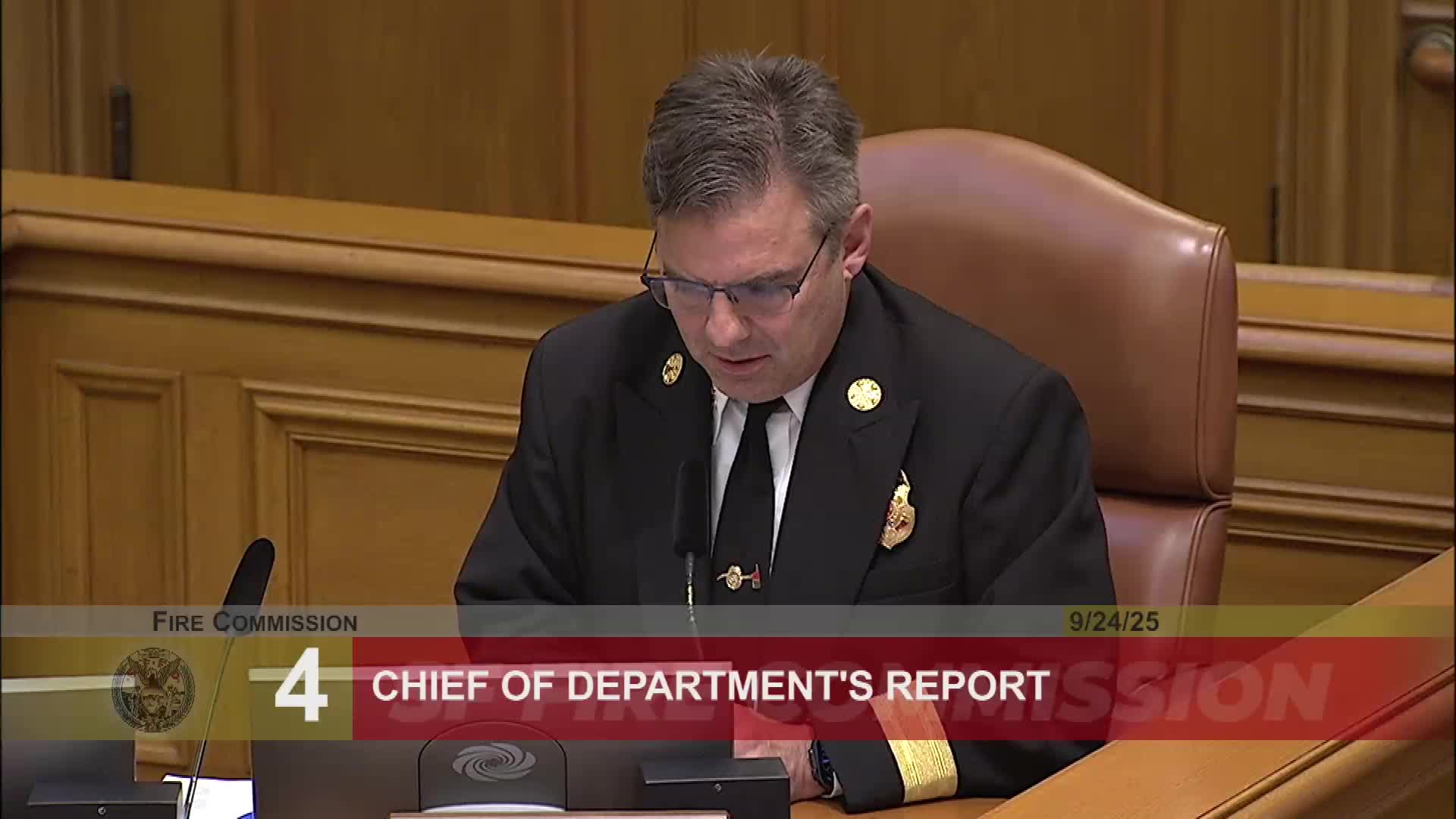Fire Department prioritizes station replacements for 2028 bond amid budget challenges
September 24, 2025 | San Francisco City, San Francisco County, California
This article was created by AI summarizing key points discussed. AI makes mistakes, so for full details and context, please refer to the video of the full meeting. Please report any errors so we can fix them. Report an error »

In the heart of San Francisco's bustling city hall, a pivotal meeting unfolded, shedding light on the future of the city's fire stations and emergency preparedness. The discussions, led by fire department officials, revealed critical updates on the replacement of aging fire stations, with costs that raised eyebrows and prompted urgent prioritization.
The fire chief presented staggering estimates for the replacement of several key facilities: Fire Station 2 at $31.8 million, Fire Station 7 at $41.6 million, and Fire Station 40 at a hefty $176 million. These figures underscore the pressing need for infrastructure that meets modern safety standards, especially in a city prone to disasters. The chief emphasized that two of these stations serve as battalion command centers, vital for coordinating responses during emergencies.
As the city gears up for a potential 2026 Easter bond, which could allocate $350 million across various public safety agencies, the fire department is racing against time to determine its priorities. The chief noted that the urgency of the situation is compounded by the need to adhere to stringent seismic standards established after the 1994 Northridge earthquake. The decision to rebuild rather than retrofit Fire Station 2 was made after extensive discussions, highlighting the building's numerous structural issues and the high costs associated with repairs.
In addition to infrastructure concerns, the meeting also touched on personnel advancements within the department. A new EMS Advancement Academy aims to increase the number of paramedics, addressing a critical need for skilled emergency responders. Furthermore, efforts to reduce the number of unassigned firefighters have seen success, with only 31 unassigned members reported, the lowest in recent memory.
The meeting concluded on a somber note as the chief paid tribute to Commander Phil Buckley, a respected figure in the fire reserves who recently passed away. His legacy of service and mentorship to aspiring firefighters was honored with a moment of silence, reminding all present of the human element behind the statistics and budgets.
As the city navigates these challenges, the urgency to secure funding and prioritize projects remains paramount. The decisions made in the coming months will shape the future of San Francisco's fire services and, ultimately, the safety of its residents.
The fire chief presented staggering estimates for the replacement of several key facilities: Fire Station 2 at $31.8 million, Fire Station 7 at $41.6 million, and Fire Station 40 at a hefty $176 million. These figures underscore the pressing need for infrastructure that meets modern safety standards, especially in a city prone to disasters. The chief emphasized that two of these stations serve as battalion command centers, vital for coordinating responses during emergencies.
As the city gears up for a potential 2026 Easter bond, which could allocate $350 million across various public safety agencies, the fire department is racing against time to determine its priorities. The chief noted that the urgency of the situation is compounded by the need to adhere to stringent seismic standards established after the 1994 Northridge earthquake. The decision to rebuild rather than retrofit Fire Station 2 was made after extensive discussions, highlighting the building's numerous structural issues and the high costs associated with repairs.
In addition to infrastructure concerns, the meeting also touched on personnel advancements within the department. A new EMS Advancement Academy aims to increase the number of paramedics, addressing a critical need for skilled emergency responders. Furthermore, efforts to reduce the number of unassigned firefighters have seen success, with only 31 unassigned members reported, the lowest in recent memory.
The meeting concluded on a somber note as the chief paid tribute to Commander Phil Buckley, a respected figure in the fire reserves who recently passed away. His legacy of service and mentorship to aspiring firefighters was honored with a moment of silence, reminding all present of the human element behind the statistics and budgets.
As the city navigates these challenges, the urgency to secure funding and prioritize projects remains paramount. The decisions made in the coming months will shape the future of San Francisco's fire services and, ultimately, the safety of its residents.
View full meeting
This article is based on a recent meeting—watch the full video and explore the complete transcript for deeper insights into the discussion.
View full meeting
